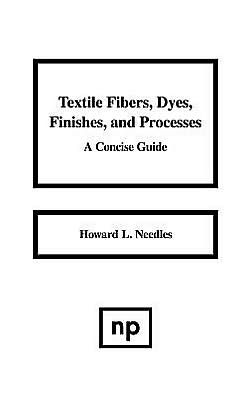5
1
9780815510765


Textile Fibers, Dyes, Finishes and Processes: A Concise Guide available in Hardcover

Textile Fibers, Dyes, Finishes and Processes: A Concise Guide
- ISBN-10:
- 0815510764
- ISBN-13:
- 9780815510765
- Pub. Date:
- 12/31/1986
- Publisher:
- Elsevier Science
- ISBN-10:
- 0815510764
- ISBN-13:
- 9780815510765
- Pub. Date:
- 12/31/1986
- Publisher:
- Elsevier Science
72.95
In Stock

Product Details
| ISBN-13: | 9780815510765 |
|---|---|
| Publisher: | Elsevier Science |
| Publication date: | 12/31/1986 |
| Series: | Textile Series |
| Edition description: | New Edition |
| Pages: | 243 |
| Product dimensions: | 6.00(w) x 9.00(h) x (d) |
From the B&N Reads Blog
